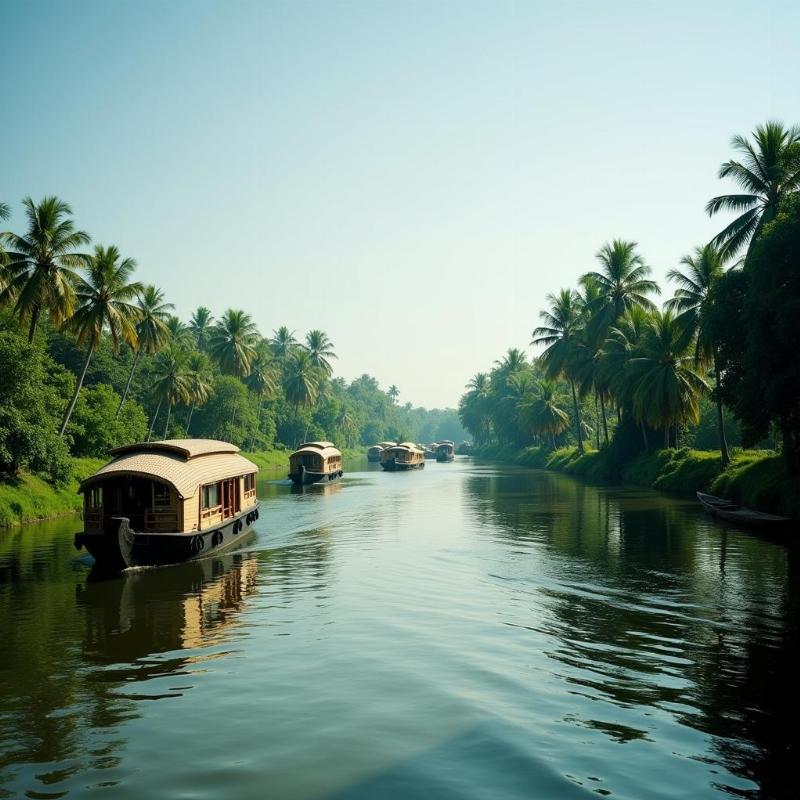Describing a place effectively is more than just listing landmarks. It’s about capturing the essence, the feeling, the unique personality of a location. Whether you’re sharing your travel experiences with friends, writing a blog post, or crafting a compelling travel itinerary, the ability to describe a place vividly is essential. This guide will equip you with the tools and techniques to bring your travel stories to life and transport your audience to the heart of your adventures.
Painting a Picture with Words: The Art of Description
How do you describe a place so that others can see it through your eyes? The key is to engage all the senses. Think beyond what you see. What do you hear? Smell? Taste? Feel? These sensory details are the building blocks of a rich and immersive description. Imagine yourself in a bustling marketplace in Jaipur. Don’t just mention the vibrant colors. Describe the aroma of spices, the cacophony of vendors hawking their wares, the jostling crowds, and the feel of silk scarves between your fingers.
Beyond the Visual: Evoking Emotions and Memories
Describing a place involves more than just conveying physical attributes. It’s about connecting with the emotional resonance of a location. What feelings does the place evoke? Is it a sense of peace and tranquility by the serene backwaters of Kerala? Or perhaps a rush of excitement exploring the ancient ruins of Hampi? By tapping into these emotions, you create a deeper connection with your audience and make your descriptions more impactful. Do you remember the taste of the chai you sipped while watching the sunrise over the Himalayas? Share that memory! It’s these small details that bring your descriptions to life.
 Peaceful Kerala Backwaters
Peaceful Kerala Backwaters
From General to Specific: Mastering the Details
When you describe a place, start with a general overview and then zoom in on specific details. For example, instead of simply saying “the beach was beautiful,” describe the texture of the sand, the color of the water, the shape of the waves, and the types of shells scattered along the shore. Instead of saying “the city was crowded,” describe the flow of traffic, the types of vehicles, the sounds of horns, and the snippets of conversations you overheard. These specific details create a more vivid and memorable picture for your reader.
Using Figurative Language to Enhance Your Descriptions
Metaphors, similes, and personification can add depth and richness to your descriptions. The Himalayas, standing like ancient sentinels, guarded the valley. The Ganges flowed like a ribbon of silver through the plains. The old fort whispered stories of forgotten empires. These literary devices can paint a more evocative and engaging picture of a place.
Show, Don’t Tell: Bringing Your Descriptions to Life
Instead of simply telling your readers that a place is exciting, show them through vivid descriptions. For example, instead of writing “The street food was delicious,” describe the sizzling spices, the vibrant colors of the ingredients, and the aroma that fills the air. Use active verbs and descriptive adjectives to create a sensory experience for your audience.
Conclusion: Crafting Unforgettable Travel Narratives
Describing a place effectively is about combining sensory details, emotional resonance, and evocative language to create a vivid and memorable picture for your audience. By following these tips, you can transform your travel stories from simple recounts of events into captivating narratives that transport your readers to the heart of your adventures. So, go forth, explore, and describe the world around you with passion and precision!
FAQ
- How can I make my descriptions more engaging? Focus on sensory details and emotional resonance.
- What are some examples of figurative language I can use? Metaphors, similes, and personification.
- How can I show, not tell in my descriptions? Use active verbs and descriptive adjectives to create a sensory experience.
- What’s the best way to structure a description? Start with a general overview and then zoom in on specific details.
- Why is it important to describe a place effectively? To bring your travel stories to life and transport your audience to the heart of your adventures.
- How can I describe a place I haven’t visited? Research thoroughly and use your imagination to fill in the sensory details.
- What’s the difference between describing a place and writing a travel guide? A description focuses on creating a vivid picture, while a travel guide provides practical information.
Related Articles
a visit to a historical place essay provides a structured approach to capturing the essence of historical sites. Thinking about nearby places to visit with friends? This resource offers great ideas for group travel. Understanding the place meaning in malayalam can enrich your cultural experience.
About PlaToVi
PlaToVi is your one-stop shop for all your travel needs, offering a range of services from curated tour packages and hotel bookings to flight reservations and visa assistance. Whether you’re looking to explore the vibrant culture of India or embark on an international adventure, PlaToVi can help you plan the perfect trip. For personalized assistance and to start planning your next unforgettable journey, contact us at [email protected] or call us at +91 22-2517-3581.